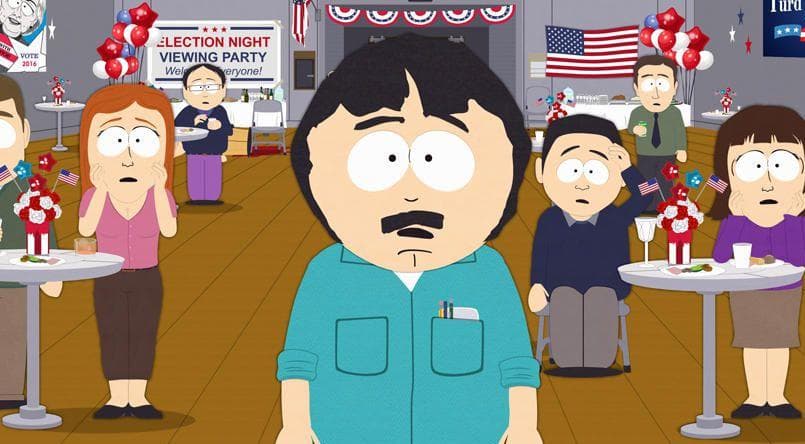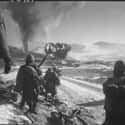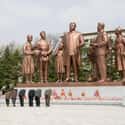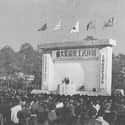-
(#8) Korea Would've Been Reunited By Nuclear Fallout If MacArthur Had His Way
Given China's intervention into the war, MacArthur came up with a surefire strategy to win under the new circumstances: 30 to 50 atomic bomb drops. They would be targeted at completely destroying both China's and North Korea's air force. This done, he would then spread a defensive perimeter of radioactive cobalt along the Chinese-Korean border, preventing any further land invasion. Their supply lines cut, the North Korea army would be quickly starved into submission.
Truman and the Joint Chiefs of Staff were not on board. Besides fears that Russia would enter the war, starting WWIII, they really didn't want to carve a swath of radioactive fallout across east Asia. Instead, they opted to fire MacArthur in April 1951.
-
(#1) From 1392-1910 Korea Was A Relatively Unified Kingdom
For nearly 5 centuries, the Korean Peninsula was ruled by the Joseon Dynasty with varying degrees of authority. The Joseon Dynasty arose after many years of decline on the part of the 400-year-old Goryeo Dynasty and a few years of nominal Mongol occupation. Long story short, an ambitious general named Yi Seong-gye staged a coup, and - after a few years of puppet rule - installed himself as the new King. Going by the moniker King Taejo, he moved the capital to Seoul (then Hanseong).
The Joseon Dynasty's power wasn't always absolute over their 500-year reign, however. In 1401, it became a tributary of Ming China. In 1592 and 1597, Japan invaded, but they didn't stay around long. In 1637, the Joseon lost a war with the newly established Qing Dynasty in China and was forced again to become their tributary.
By the end of the 19th century, the Joseon Dynasty was in decline. Both the Donghak peasant rebellion and increasingly untenable isolationist policies left the central government weak. At this point, both Chinese and Japanese forces increased their presence in Korea, leading to the First Sino-Japanese War (fought mainly on Korean soil). After Qing China's defeat at the hands of Japan in 1895, Korea then became a tributary of Japan.
-
(#7) Maoist China Intervened On The Side of North Korea
Just as the Korean War appeared to be over, China sent its armies into Korea in November 1950 to fight the UN forces. Even after initial attacks, the UN forces led by MacArthur continued to discount the size of the Chinese force, which was 300,000 strong. Overwhelmed by the human-wave tactics used by the Chinese Communist forces, UN forces were turned back in disarray.
By the beginning of the new year, they were defending a line south of Seoul. The line held, however, and the UN forces were again able to push north to the 38th parallel.
-
(#6) In 1950, Communist North Korea Invaded The South
Seeing the success of Mao in China, Kim Il-sung decided to embark on a Korean reunification effort. In June, thousands of troops, armed with Russian tanks, guns, and planes, flooded over the 38th parallel, marking the beginning of the Korean War.
The newly formed United Nations Security Council then branded the North as the aggressor. The British Far East Fleet was drawn into service, and the US began sending in troops. The North's advance was stopped at the port city of Pusan. As reinforcements arrived, UN forces pushed northward. Under the command of MacArthur, UN forces were granted permission to cross the 38th parallel and attempt to reunify Korea as the Republic of Korea. By the end of October, they controlled most of the Peninsula.
-
(#12) North Korea Remains A Communist Dictatorship
North Korea started its existence with an economic advantage due to the fact that it was the industrial center of the Japanese colony. Combined with the massive assistance it received from the Soviet Union, the country was poised to become a modern, industrial nation. Unfortunately, it could not maintain the lead.
In the 1960s, the Soviet Union withdrew support after the Sino-Soviet split. During the 1970s, North Korea's economy began to falter due to depleted oil reserves. In 1980, the country defaulted on its debt. Between 1996 and 1999, the country suffered from a famine that killed between 600,000 and 900,000 people.
The problems faced by ordinary citizens in North Korea since the Korean War make South Korea seem like paradise in comparison. North Korea remains the only surviving Stalinist regime, ruled by the Kim family with an iron fist. The country still has concentration camps where political dissidents are imprisoned and tortured.
-
(#4) In 1948, Two Governments Were Formed In The Two Zones
Initially, the idea was to unify Korea under one government when it was split in the wake of WWII. However, the occupying US and Soviet forces couldn't agree if said government would be capitalist and democratic or communist. Notably, Korea had never been either before, only having experience as a caste-based monarchy and a subservient colony, respectively.
To solve the impasse, the US basically set up anti-communist Syngman Rhee as the President of the Republic of Korea with United Nations sanctioned elections in August. In September, the Soviet Union set up former Soviet Red Army Major Kim Il-sung as the Premier of the Democratic People’s Republic of Korea (in the Stalinist, "cult-of-personality" model). Each of the two governments claimed sovereignty over the whole of the Korean Peninsula.
New Random Displays Display All By Ranking
About This Tool
After Japan surrendered in 1945, the Korean peninsula was bounded by the 38th parallel north and received by the Soviet Union and the United States. With the support of the United States and the Soviet Union, South Korea was established in the southern Korean peninsula in August 1948, and the Democratic People’s Republic of Korea was established in the north in September 1948.
The Korean peninsula was unified for centuries after the Joseon Dynasty, and they shared the same language and basic culture. However, in the past years, the north and south have been divided into two countries along a 38 degree north latitude. The random tool explained 12 historical reasons why there are two countries.
Our data comes from Ranker, If you want to participate in the ranking of items displayed on this page, please click here.
















